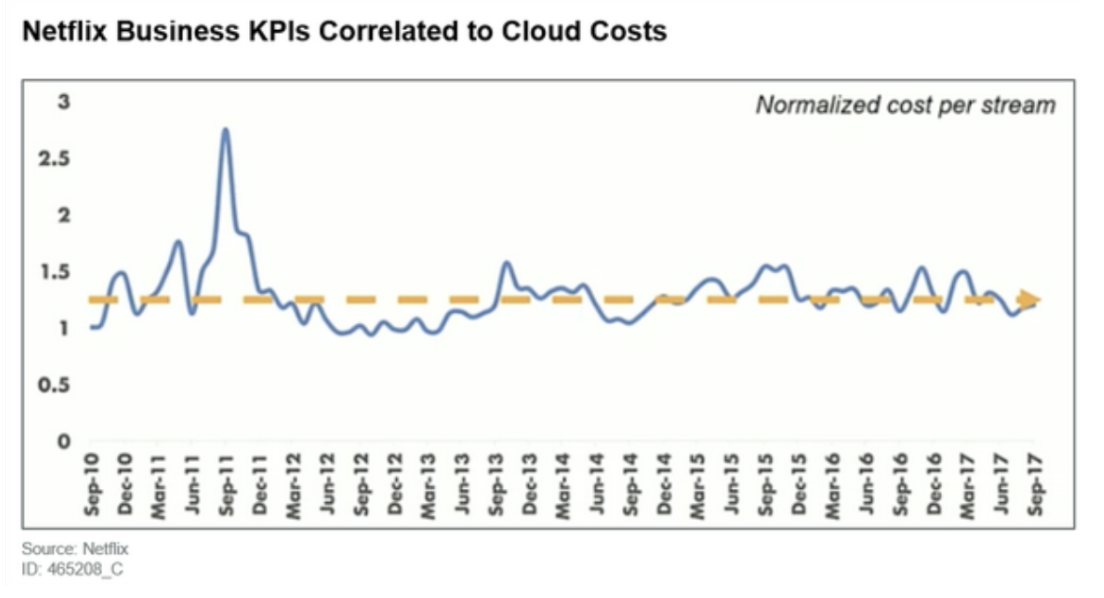Earlier this year, Gartner published “How to Manage and Optimize Costs of Public Cloud IaaS and PaaS,” by analysts Marco Meinardi and Traverse Clayton.
As a company that is focused on enabling engineering teams with cloud cost intelligence, we were of course curious what they had to say.
Now, if you are familiar with Gartner, you know they have a reputation for serving enterprise clients, so they can sometimes be — well, enterprisey. We were expecting that maybe the report would offer a blueprint for bigger, more long-standing companies and less-so for the most cutting edge cloud native companies.
We were very encouraged to see that Gartner is thinking about cloud cost optimization in the same way as cloud savvy companies like Netflix, Lyft, and Expedia. We talk to companies every day about their cloud cost challenges — and hear many of the same themes.
So, we thought we’d list a few of the ways this article rang true to us — and a few areas we think they could have made it stronger.
Before we dive in, we’ll share our main takeaway.
Throughout this report, Gartner describes how taking the practices of DevOps, like individual autonomy and automation, and applying them to cost will help companies achieve benefits like speed, lack of disruption, and cost optimization. It seems simple and intuitive, but in our experience, not everyone is thinking about cost in this way.
What They Get Right
Cloud cost needs to be correlated with business KPIs.
Companies move to the cloud to innovate — and if the company is growing, the cloud bill should be too. One of the biggest takeaways in this article is that cloud cost isn’t always a bad thing — and doesn’t need to be reduced at all costs.
The article states, “Driving costs down as a principle must not be done at the expense of being unable to fully support the business goals. To avoid this, you should stop considering cloud costs as such and start considering them as investments. Then, you must correlate them to business KPIs and calculate the return of these investments.”
The authors provide the example of Netflix, who measures their cost per stream as a way to track ROI on cloud spend.

Our take: These kinds of metrics put cost and context and help you ensure your economies of scale are in check.
A culture of autonomy is key to scaling cost optimization.
The report suggests building dashboards for end users to have visibility into their costs. They propose that companies need to build cost dashboards or reports for each project, application, department and any other resource. These resources should include information such as trending patterns, actual versus planned spending, and percentage of overall spending.
They also explain that governance that includes “guardrails and guidelines” but “allows cloud consumers to have direct access to the native cloud interfaces,” rather than “central IT stand[ing] in the way between cloud consumers and cloud environments” is the only way companies can “unlock benefits such as agility and speed that organizations seek from cloud technologies.” Cost anomalies are an example of how companies can implement guardrails.
Our take: Autonomy is the only way to most fast and innovate. Plus, cost anomalies are kind of our thing — so we especially like this recommendation.
Cloud cost optimization is shifting left.
Clayton and Meinardi write that teams should “collaborate with product owners and business stakeholders to understand the purpose of each application and the value it delivers to the organization,” then set cost requirements during planning. Cost should be discussed in context with other requirements such as availability, performance, and more.
Our take:We couldn’t agree more on this point. We actually wrote earlier this year about how cloud cost optimization is ready to shift left and how the CloudZero engineering team incorporates cost as a non-functional requirement in development.

High-impact optimization lies in application architecture.
The category of cloud cost optimization has long been confined to taking advantage of AWS discounting and eliminating waste. And while reducing waste isn’t in and of itself bad, it’s often not as strategic as building cost-optimized architecture.
The Gartner report walks through how companies should make cost-based architectural decisions related to how the product is going to be used and sold — and should consider taking advantage of next generation services, like serverless, when applicable. For example, “An application with expected spikes in usage will possibly be more cost-effective if powered by consumption-based services. A stable application will be best for allocation-based models.”
Our take: The most disruptive companies didn’t capitalize entire markets by negotiating a better price on reserved instances. They built innovative ways to deliver products and services in different or more cost effective ways. Our CRO discusses that topic here.
Where They Miss
Business KPIs need to be more than basic unit cost metrics.
While we applaud the focus on business context and KPIs, the report lacked detail beyond the recommendation that companies align overall cost to a single metric, such as Netflix’s “cost per stream.”
The companies who are best positioned to use cost to their strategic advantage have a granular understanding across different dimensions, like product features, customers, GTM segments, and more.
These companies can maximize revenue because they know exactly what their margins are. For example, if a company’s cost to deliver products to the mid-market is the same as their enterprise customers, they may want to look at whether they should change their pricing model, packing, sales incentives, marketing targets, and more.
Engineering needs more context than cost trends and reports.
We agree that taking the first step to provide trends and anomalies to engineers is an excellent one. However, in our experience, sometimes those dashboards and reports can create as many questions as answers.
In order to fully take advantage of the speed and agility that comes from a culture of cost autonomy, engineering teams need the ability to quickly understand exactly what caused changes in cost.
To do so, engineering teams should enrich billing data with context, so developers can quickly connect cost to cause and understand the impact of the change. For example, they should know whether a cost will be a one-time event or whether it will be repeated daily, or with every transaction that takes place on the platform.
Helping engineers make sense of it as quickly as possible allows them to make decisions in the moment about whether or not it’s worth time and resources to address.
CloudZero Can Help
If you’re looking to build an engineering culture of cost autonomy (like Gartner recommends), check out CloudZero.
CloudZero aligns cloud cost to your business metrics — such as unit cost, products, and features — and delivers relevant, context rich cost intelligence to engineering decisions.








